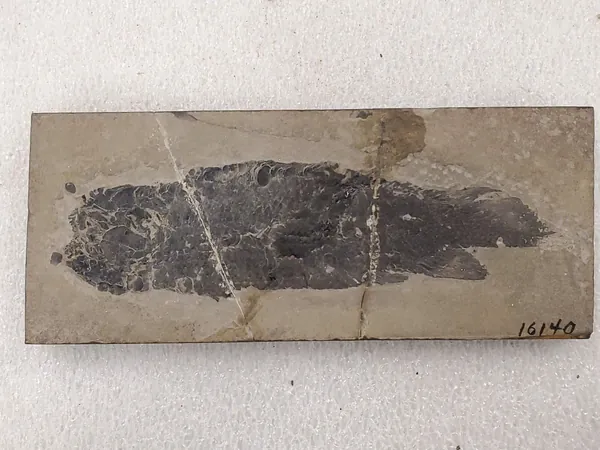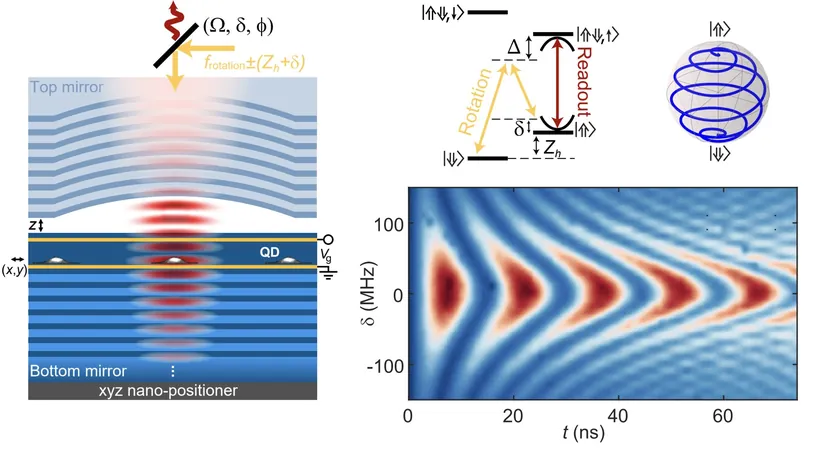
Jaw-Dropping Evolution: How Fish Shaped Vertebrate History
2025-09-02
Author: Nur
The Jaws that Changed Evolution
If you're reading this, raise a fin to fish! These ancient creatures were the pioneers of jaw evolution, a game-changer that not only helped them munch on their favorite snacks but also provided defense, aided in burrowing, and even served as a nursery for their young. This evolutionary leap laid the groundwork for all vertebrates, including humans.
The Lobe-Finned Fish Explosion
A groundbreaking study from the University of Michigan has revealed that lobe-finned fishes, a now-rare group, experienced a phenomenal burst of diversity between 359 and 423 million years ago. During this time, their jaw innovations were rapid and fascinating, setting them apart from their ray-finned relatives, who saw much slower evolutionary changes.
Surprisingly, the once-diverse lobe-finned fishes encountered a decline, becoming the famous 'living fossils' we know today, including the coelacanth—an ancient fish thought to be extinct until its rediscovery in 1938 by Marjorie Courtenay-Latimer. Nowadays, just eight species remain, while ray-finned fishes boast around 33,000 species, including familiar faces like goldfish and seahorses.
Unlocking Ancient Secrets through Fossils
Led by postdoctoral researcher Emily Troyer, this study underscores the treasure trove of information that ancient fossils provide about evolutionary dynamics. The dramatic difference in evolutionary prowess between lobe-finned and ray-finned fishes is a revelation that could only be unlocked through fossil records from the Silurian and Devonian periods.
"The fossil record is invaluable; without it, we'd miss crucial insights into evolution's twists and turns," Troyer emphasized.
A Look Back in Time
While scientists have long speculated about the pivotal role of jaws in vertebrate evolution, this study is a rarity in comparing early fish jaw evolution. Using 3D models from CT scans of 86 species dating back over 443 million years, researchers found that lobe-finned fishes, notably lungfish and coelacanths, exhibited the quickest evolution of jaw shapes and functions.
Troyer pointed out, "Today, lungfish and coelacanths only have eight species with limited jaw diversity. Yet, looking back 400 million years reveals an abundance of variation. The Devonian period boasted tremendous innovation in jaw designs."
The Mechanics Behind Evolution
The team digitally mapped jaw models to analyze both structure and mechanical advantage—the jaw's biting force. A greater mechanical advantage means a stronger bite, and the results were striking.
The initial Devonian period sparked significant growth in the size and thickness of lungfish jaws, empowering them to tackle harder prey like early clams and crustaceans. Troyer noted, "With their robust jaws, they could feast on tough food, indicating that feeding strategies shaped jaw evolution alongside ecosystem changes of the time."
Unique Evolutionary Journeys
Co-author Rafael Rivero-Vega, who gathered CT scan data and created 3D models of nearly every complete lobe-finned fish jaw fossil, was amazed by these findings. He described a tale of unique evolutionary moments, where different fish groups transitioned through rapid diversification in jaw shape and size, only to stabilize once they fitted into specific ecological niches.
"This research showcases how various fish groups can evolve distinct shapes and functions at their own pace in response to environmental pressures, long before the age of dinosaurs," Rivero-Vega said. "Fishes are truly fascinating!"



 Brasil (PT)
Brasil (PT)
 Canada (EN)
Canada (EN)
 Chile (ES)
Chile (ES)
 Česko (CS)
Česko (CS)
 대한민국 (KO)
대한민국 (KO)
 España (ES)
España (ES)
 France (FR)
France (FR)
 Hong Kong (EN)
Hong Kong (EN)
 Italia (IT)
Italia (IT)
 日本 (JA)
日本 (JA)
 Magyarország (HU)
Magyarország (HU)
 Norge (NO)
Norge (NO)
 Polska (PL)
Polska (PL)
 Schweiz (DE)
Schweiz (DE)
 Singapore (EN)
Singapore (EN)
 Sverige (SV)
Sverige (SV)
 Suomi (FI)
Suomi (FI)
 Türkiye (TR)
Türkiye (TR)
 الإمارات العربية المتحدة (AR)
الإمارات العربية المتحدة (AR)